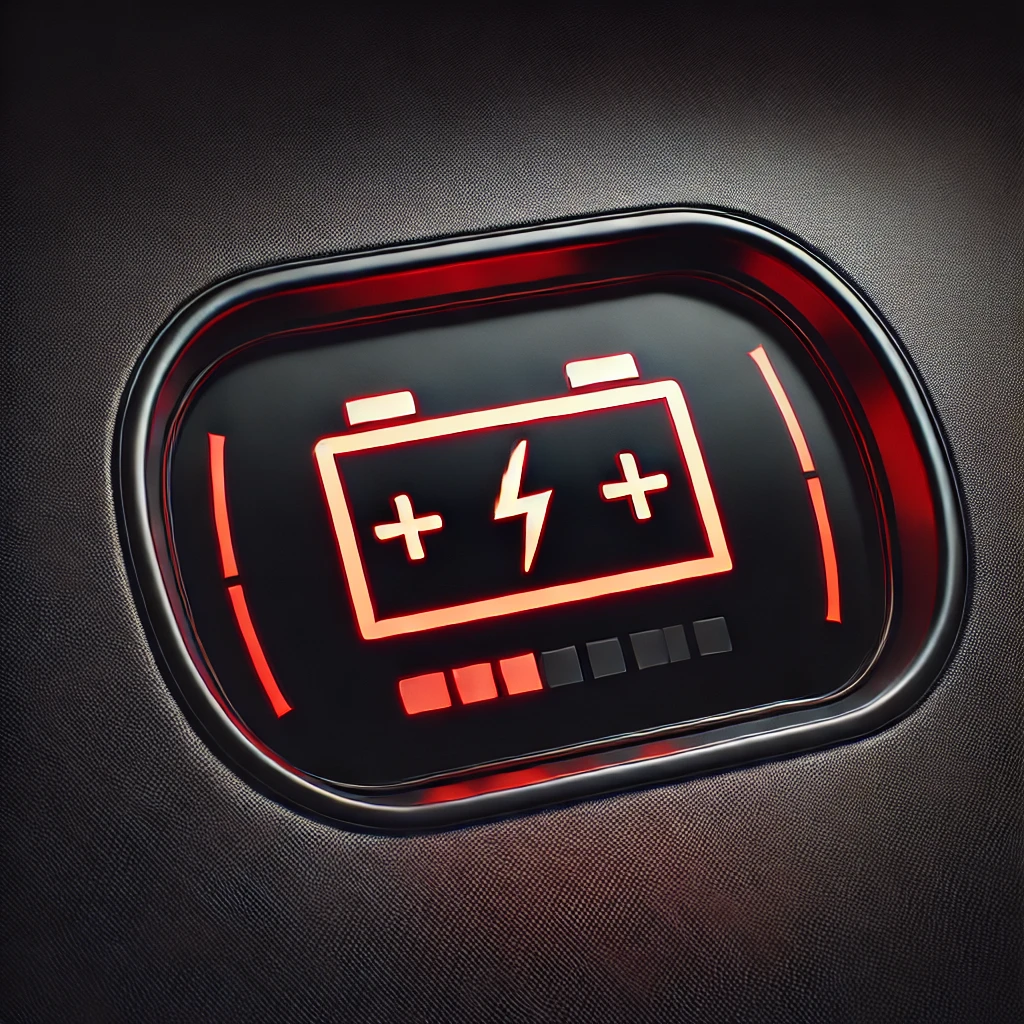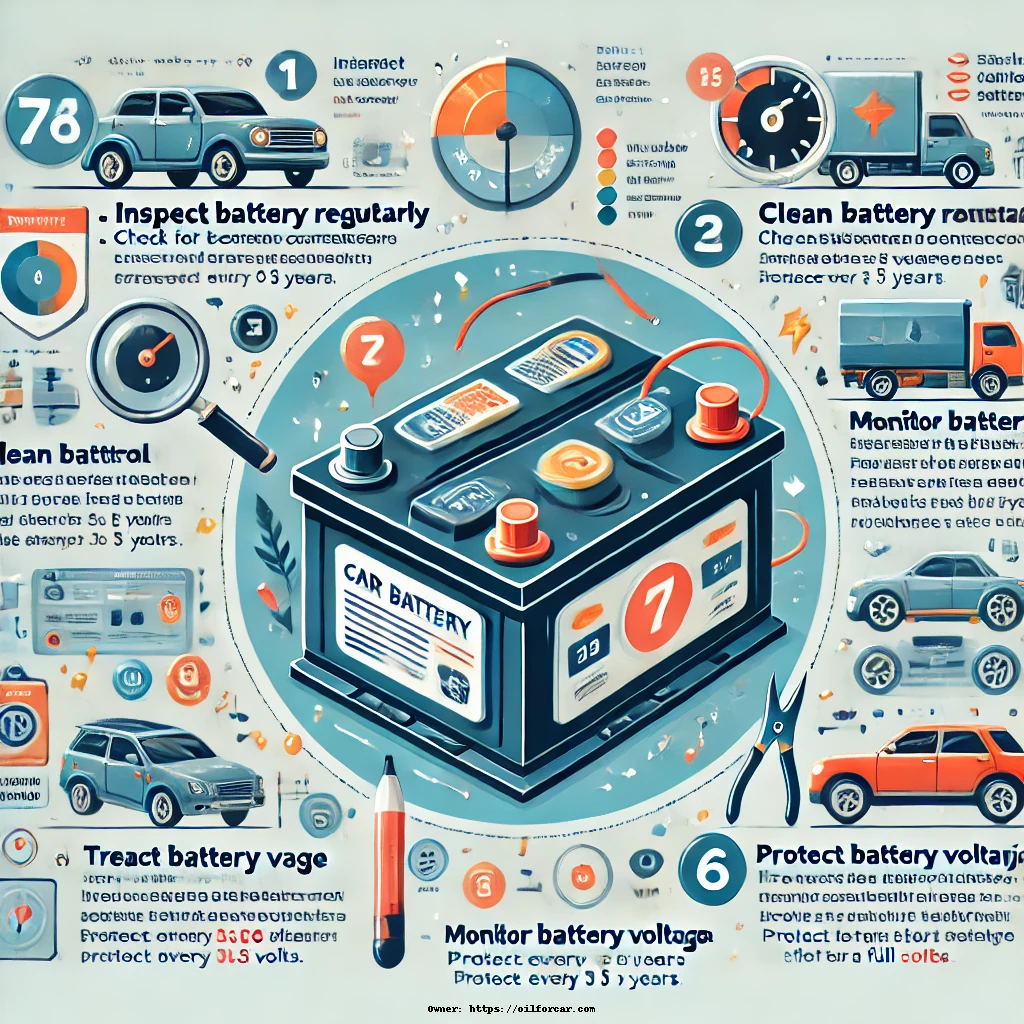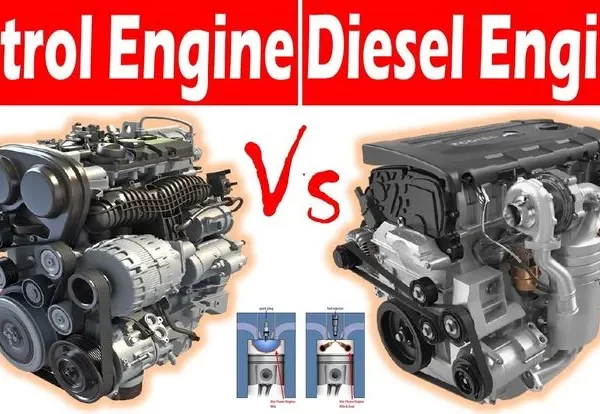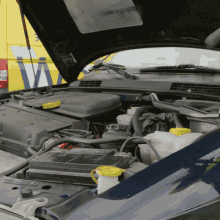Car batteries play a vital role in the smooth operation of our vehicles, powering everything from ignition to essential electrical systems. Recognizing the signs of a failing car battery is essential to ensure your driving experience remains trouble-free. Unfortunately, many drivers neglect their battery’s health until issues arise and resulted to dead battery, which can lead to inconvenient breakdowns. By being aware of the warning signs, you can take timely action to prevent problems before they worsen, ultimately saving yourself from unexpected repairs and frustration. In this guide, we’ll examine the key indicators that suggest your car battery may be approaching the end of its life, helping you stay informed and prepared.
If you’ve ever had trouble starting your car on a cold morning or noticed your lights dimming, it could be a sign that your battery is failing. Recognizing these early warning signs can help you avoid being stranded on the road or dealing with costly repairs later on. In this article, I’ll explain the most common signs of a failing car battery and what you can do to prevent problems before they escalate.
Difficulty Starting the Engine
One of the first and most noticeable signs that your car battery may be failing is difficulty starting the engine. When you turn the key or push the start button, and the engine doesn’t crank up right away, it can be frustrating. But this isn’t just a minor inconvenience; it’s a major signal from your car that something is wrong with the battery.
When a battery is weak, it struggles to provide enough power to start the engine. You might hear a slow, dragging sound, or the engine might take longer than usual to turn over. Sometimes, it doesn’t start at all until you try multiple times. These issues happen because the battery isn’t holding a charge as well as it should.
Why Does This Happen?
- Battery Depletion: Over time, a car battery naturally loses its ability to hold a charge. This can be accelerated by cold weather, which makes it harder for the battery to supply power.
- Electrical Drain: Leaving lights on overnight or using electronics while the engine is off can drain the battery, leaving it weak the next day.
- Old Age: Car batteries typically last 3-5 years. If your battery is older than that, it might be nearing the end of its life.
Signs of a Weak Battery
- Slow Engine Crank: The car takes longer to start or makes sluggish sounds during ignition.
- Dim Dashboard Lights: When trying to start, you may notice the dashboard lights dimming, indicating a power drop.
- Frequent Jump Starts: Needing a jump start more than once is a clear sign of a weak battery.
Expert Tip:
As someone who’s worked on hundreds of Toyota vehicles, I recommend that drivers monitor their engine’s starting behavior. If it starts to feel sluggish or hesitates more often than not, it’s time to get the battery tested. A weak battery can leave you stranded, and in my experience, replacing it sooner rather than later saves a lot of headaches.
Here’s a pro tip: Pay extra attention in cold weather. Batteries lose efficiency in colder temperatures, and that’s when weak batteries tend to fail completely. Keeping a battery charger handy during the winter months is always a good idea.
For more tips on how to maintain your vehicle during colder months, check out our guide on Winter Driving Tips, where we cover everything from tire pressure to engine care.
What to Do Next?
If you notice any of these signs, don’t ignore them! It’s always better to have the battery tested at your local auto shop. They can tell you if the battery needs a replacement or if the issue might lie elsewhere, such as with the alternator.
- Step 1: Get your battery tested at a local auto shop.
- Step 2: If necessary, replace the battery, especially if it’s more than 3-5 years old.
- Step 3: Check for any electrical issues that might be draining the battery.
A quick inspection could save you from getting stranded when you least expect it.
Activation of the Battery Warning Light
The battery warning light on your dashboard is one of the clearest signs that your car’s electrical system might be in trouble. This small light, usually shaped like a battery, isn’t just there to fill space—it’s your vehicle’s way of telling you that something isn’t quite right.
What Does the Battery Light Mean?
When the battery light comes on, it means your car isn’t charging the battery properly. This doesn’t always mean that the battery itself is bad. The issue could be with the alternator (which charges the battery), the wiring, or even loose terminal connections. If the light stays on while driving, it’s a signal that your car is running on battery power alone, and that won’t last long.
Common Causes of the Battery Light Activation
Here are some typical reasons why the battery light might illuminate:
- Loose Battery Cables: A loose connection between the battery and the car can trigger the light.
- Alternator Issues: A failing alternator means the battery won’t recharge while driving.
- Corrosion on Battery Terminals: Corrosion can interrupt the flow of electricity and activate the warning light.
- Serpentine Belt Problems: If the belt is loose or broken, the alternator won’t work, and the battery light will come on.
Pro Tip: If your battery light appears and you’re far from a mechanic, try turning off any non-essential electronics like the radio, A/C, and headlights. This reduces the drain on your battery and might give you a bit more time to get help.
What Should You Do When the Battery Light Comes On?
Here are some practical steps you can take if you see the battery warning light:
- Check for Obvious Issues: Pop the hood and see if the battery cables are loose or if there’s visible corrosion on the terminals.
- Test the Alternator: You can test the alternator’s output with a simple multimeter or have a professional do it.
- Visit a Mechanic: If the light stays on after starting your car, it’s best to have a mechanic inspect the electrical system.
Why Ignoring the Battery Light Can Lead to Bigger Problems
Ignoring the battery light could lead to bigger issues, like being stranded with a completely dead battery. When the alternator fails to charge the battery, you could lose power to critical systems, including your headlights and even power steering.
Expert Advice: In my years as a mechanic, I’ve seen many people dismiss the battery warning light as just a glitch. One customer drove for a week with the light on, only to end up stranded on the highway at night. By taking the warning seriously and getting your car checked early, you can avoid a much bigger headache later.
Routine Monitoring to Prevent Battery Issues
To prevent the battery light from surprising you, it’s a good idea to make checking your battery part of your routine maintenance. Here’s what you can do:
- Inspect the Battery Regularly: Check for visible corrosion and make sure the connections are tight.
- Have Your Alternator Tested: Most auto parts stores can test the alternator for free.
- Monitor the Warning Light: If it comes on occasionally and goes off again, still have it checked, as it might be an intermittent issue.
A Quick Recap of Key Points
- The battery warning light signals that your car’s charging system isn’t working properly.
- Common causes include alternator problems, loose cables, and corrosion.
- Don’t ignore the warning light—get your car checked right away to avoid more severe issues.
Remember, when the battery warning light comes on, it’s your car telling you to take action. It might not seem like a big deal at first, but ignoring it could lead to getting stuck without power. Take it from me—it’s much better to handle the issue early and save yourself the trouble later!
Internal Links:
Image Example:
Here’s what the battery warning light looks like on most dashboards:

Dimming or Flickering Lights: A Clear Sign Your Battery Needs Attention
When you notice that the lights in your car are dimming or flickering, it’s a clear signal that your car’s battery might be struggling. This is not just a random occurrence; it’s usually a sign that the battery isn’t supplying enough power to keep all the car’s electrical components running smoothly.
Why Do Lights Dim or Flicker?
Your car’s battery powers everything from the headlights to the radio. If the battery is weak or close to failing, it may not provide enough energy to keep the lights at full brightness. This often happens when you’re using several electrical features at once, like the headlights, air conditioner, and wipers. If the battery can’t handle the load, the lights will flicker or dim.
- Low Battery Power: A weak battery can’t provide stable electricity, causing fluctuations in power output.
- Failing Alternator: Sometimes, it’s not just the battery—if the alternator isn’t recharging the battery properly, it leads to dimming lights.
- Corroded Connections: Corrosion on battery terminals can also cause poor electrical flow, leading to flickering lights.
Common Situations Where Dimming Occurs
Have you ever turned on your headlights, only to notice that they seem a bit duller than usual? Or maybe they flicker for a second when you start the car? These are common signs of a failing battery. Here are a few scenarios to look out for:
- Headlights Dimming While Driving: If your headlights start to dim as you drive, it’s a strong indicator that your battery isn’t holding its charge.
- Dashboard Lights Flickering: Another noticeable sign is when the dashboard lights flicker, especially when the car is idling or right after starting.
- Intermittent Light Behavior: Sometimes, lights might flicker randomly—this inconsistency is a classic symptom of an unstable electrical system due to a battery that’s nearing the end of its life.
What an Expert Would Do
As someone who has dealt with dozens of battery issues over the years, I always recommend addressing these symptoms early. One of my customers, for example, noticed flickering lights during winter. After inspecting the car, I found that the battery was too old, and its power output was unreliable in cold weather. We replaced it, and the lighting issues were instantly resolved.
If you’re seeing dimming or flickering lights, the first step is to check the battery’s age. A typical car battery lasts around 3-5 years, but extreme weather or frequent short trips can shorten its life.
DIY Inspection Tip
Before heading to a mechanic, you can do a quick check at home. Pop the hood and look at the battery terminals. If you see corrosion (a white or greenish powder), that could be the reason for poor electrical connections. Cleaning it with a baking soda and water mixture can sometimes fix the issue temporarily. However, if the battery is more than three years old, it’s best to have it tested or replaced.
When to Seek Professional Help
If cleaning the terminals doesn’t fix the issue, or if the flickering happens consistently, it’s time to see a mechanic. They’ll be able to test the battery’s voltage and check the alternator to determine if the problem lies with the battery or elsewhere in the car’s electrical system.
Pro Tip: Always test your car battery before winter if you live in cold areas, as batteries are more likely to fail in low temperatures.
Key Takeaways
- Dimming or flickering lights are often a sign that your car battery is failing or struggling to deliver enough power.
- Check for corrosion on the battery terminals, and if the battery is over 3 years old, consider replacing it.
- Regular battery checks and cleaning can prevent bigger electrical issues down the road.
Dimming or flickering lights should never be ignored. By catching these early signs, you can avoid getting stranded with a dead battery.
Visible Corrosion on the Battery Terminals
Visible corrosion on your car’s battery terminals is a clear warning sign that something isn’t right with your battery. Corrosion usually appears as a white, green, or even brown, chalky substance around the battery terminals. This might not seem like a big deal at first glance, but it can seriously impact the performance of your vehicle’s electrical system. Let’s break down what this means in simple terms.
What Causes Battery Corrosion?
Corrosion on your car’s battery terminals happens for a few reasons:
- Leakage of battery acid: Over time, a small amount of battery acid might escape, especially if the battery is old or overcharged.
- Condensation: Moisture in the air can cause the metal terminals to oxidize, leading to corrosion.
- Chemical reaction: The reaction between hydrogen gas (which the battery naturally emits) and surrounding elements can cause the terminals to corrode.
How Does Corrosion Affect Your Battery?
Battery terminal corrosion can disrupt the electrical current flowing between the battery and the rest of the car. This means your car might have a hard time starting, and some of the electrical systems (like the lights, radio, or wipers) may not work properly.
The corrosion acts as a barrier between the battery and the cables that deliver electricity to the engine, making the car’s performance unreliable. This buildup can even cause permanent damage to the battery if not addressed quickly.
Recognizing Corrosion
Most people don’t regularly check under their car’s hood unless there’s a problem. However, visible corrosion is easy to spot:
- Look for a white, powdery substance on the battery terminals.
- Sometimes, the corrosion might also look green or brown, depending on the type of metal used in the terminals.
- If you notice corrosion, it’s a strong sign that the battery is deteriorating and needs attention.
Expert Advice: Cleaning Corroded Battery Terminals
If you spot corrosion, it’s important to clean it off before it causes more damage. Here’s a simple step-by-step process to clean your battery terminals at home:
- Turn off the car and make sure it’s in park.
- Wear protective gloves and goggles because battery acid can be harmful.
- Disconnect the battery cables: Start by removing the negative cable (marked with a “-“), then the positive cable (marked with a “+”).
- Prepare a cleaning solution: Mix a tablespoon of baking soda with a cup of water. The baking soda will neutralize the acid.
- Scrub the terminals using a toothbrush or wire brush dipped in the baking soda solution. This will help remove the corrosion buildup.
- Rinse with water and then dry the terminals with a clean cloth.
- Reconnect the battery cables, starting with the positive terminal.
Pro Tip: Apply a small amount of petroleum jelly or battery terminal grease to prevent future corrosion.
When to Call a Professional
Sometimes, the corrosion might be more severe than a simple cleaning can fix. If you notice the corrosion returning frequently or if your car continues to have trouble starting even after cleaning the terminals, it might be time to replace the battery. Consult a mechanic for a more thorough inspection, as this can indicate deeper issues with the battery or charging system.
How to Prevent Corrosion
Prevention is always better than fixing a problem after it happens. Here’s how you can keep your battery terminals clean and corrosion-free:
- Inspect your battery regularly, especially before long trips or in extreme weather conditions.
- Clean the terminals every few months to remove any small amounts of buildup before they become a bigger issue.
- Ensure the battery is securely fastened to avoid movement, which can cause leakage.
Why Corrosion Matters for the Health of Your Battery
Corrosion not only affects your car’s performance, but it can also shorten the lifespan of your battery. By cleaning the terminals regularly and keeping an eye out for any signs of wear, you can save yourself from unnecessary breakdowns and the cost of a new battery.
In my experience as an auto mechanic, I’ve seen many drivers ignore the early signs of battery trouble, only to end up stranded when their car wouldn’t start. A little attention now can save a lot of frustration later. If you’re not sure whether your battery has corrosion or needs replacing, don’t hesitate to seek help from a professional.
Visible corrosion on your car battery might seem like a minor issue, but it can lead to bigger problems if ignored. Regular inspections, prompt cleaning, and knowing when to consult a professional are key to keeping your battery in good shape and your vehicle running smoothly.
Strange Smell from the Battery
One of the most alarming signs that something is wrong with your car’s battery is a strange smell, especially if it resembles rotten eggs. This odor is a sign of sulfuric acid leaking from the battery, which is dangerous for both your vehicle and your health. Here’s why it happens and what you should do.
Why Your Battery Smells Like Rotten Eggs
Car batteries contain sulfuric acid, a key component that helps generate the electricity needed to start your car and power its electrical systems. When a battery is overcharged or damaged, the acid can start to leak. The smell of rotten eggs comes from the sulfur in the acid escaping into the air. This leak can corrode important parts of your car’s engine, damage other electrical components, and even cause the battery to fail completely.
Common Causes of the Smell
- Overcharging: If your car’s alternator is malfunctioning, it may send too much power to the battery. This overcharges the battery, causing the internal fluid to heat up, which releases sulfuric gases.
- Internal Short Circuit: A short circuit inside the battery can cause chemical reactions that produce the foul smell.
- Old Battery: As a battery ages, the components inside may start to break down, leading to leaks and gas emissions.
What You Should Do If You Notice the Smell
If you catch a strange smell from your battery, stop driving immediately. It’s a clear sign that your battery is not functioning correctly, and it could fail at any moment. Leaking sulfuric acid can also cause damage to other parts of your car, so it’s important to address this problem quickly.
Here are a few steps you should take:
- Turn off the car and inspect the battery. If you see visible corrosion or leaks, avoid touching it directly with your hands.
- Call a professional mechanic to examine the battery and surrounding parts. An expert will safely remove and replace the damaged battery.
- Avoid driving the car until the problem is fixed. A leaking battery can lead to more serious issues, including the risk of fire.
Why It’s Important to Address This Quickly
Letting a leaking battery go unchecked can cause long-term damage to your car’s engine, alternator, and electrical wiring. The acid that leaks from the battery can also corrode metal parts, which may lead to expensive repairs in the future. Worse, the smell means the battery is close to dying completely, which could leave you stranded.
Preventing Battery Smells
To prevent these issues, regularly check your battery for signs of wear and tear, especially if it’s more than three years old. Pay attention to whether your car is slow to start or if the battery light on your dashboard flickers. These are early signs that the battery might be in trouble.
Here’s what you can do to extend your battery’s life:
- Don’t overcharge your battery. Make sure your car’s alternator is working correctly, and check that it isn’t sending too much power to the battery.
- Keep your battery terminals clean and free from corrosion. You can use a baking soda solution to clean the terminals safely.
- Avoid exposing the battery to extreme temperatures, as this can cause internal damage.
Expert Advice
From my years of experience in the auto industry, I can tell you that this issue is more common than people think, especially in older cars or those with charging system problems. I once encountered a vehicle where the sulfur smell was so strong it had damaged the paint underneath the hood! Fortunately, replacing the battery and cleaning the area resolved the problem before it caused more serious damage.
Final Note: If you ever notice a strange smell coming from your battery, it’s crucial to act fast. The cost of replacing a damaged battery is far less than the damage it can cause if left unchecked.
Swollen or Bulging Battery Case
A swollen or bulging car battery case is a visual sign that something has gone wrong inside the battery. Batteries aren’t supposed to change shape, so if you notice any swelling or bulging, it’s a signal that your battery is in serious trouble. It’s important to understand why this happens and what to do about it before things get worse.
Why Does a Car Battery Swell?
Swelling in a car battery is typically caused by two main issues: overcharging or extreme temperatures.
- Overcharging
Overcharging happens when the battery receives too much power, usually from a faulty alternator or charger. This extra power causes chemical reactions inside the battery that produce excess heat and gas. Since the battery is sealed, these gases have nowhere to go, leading to the swelling of the battery case. - Extreme Temperatures
Very hot or cold weather can also cause the battery to swell. In extreme heat, the liquid inside the battery can evaporate and create gas, while freezing temperatures can lead to the expansion of the battery fluid, resulting in a bulging case. Parking in a garage or shaded area can help avoid this issue.
What Are the Risks?
A swollen battery can be dangerous. First, it may leak toxic chemicals, which are harmful to both you and the environment. Second, a bulging battery is more likely to rupture or explode, especially if exposed to more heat or continued overcharging. For safety, it’s crucial to replace a swollen battery immediately. Don’t attempt to use or repair it on your own.
What to Do if Your Battery is Swollen?
Here are the steps you should take if you see a swollen battery:
- Stop Using the Vehicle: A swollen battery means it’s unsafe to continue driving. Shut off the engine, and don’t attempt to restart the car.
- Avoid Touching the Battery: The chemicals inside can be dangerous, so don’t touch the battery directly. If you need to check it, use gloves and protective eyewear.
- Call a Professional Mechanic: A mechanic will safely remove and replace the swollen battery. Do not try to replace it yourself unless you have experience handling batteries.
Expert Tip: Preventing Battery Swelling
From my 13 years of experience working as an auto mechanic, especially with Toyota models, I’ve seen swollen batteries a few times. In most cases, these situations could have been prevented with regular maintenance and checking the charging system. Always make sure your alternator is working properly to avoid overcharging, and if you live in an area with extreme temperatures, consider getting a battery warmer or a heat shield. These simple tools can help extend your battery’s life and prevent swelling.
When to Replace the Battery
Most car batteries last between 3 to 5 years. If your battery is approaching that age, it’s smart to test it regularly. You can use a multimeter or ask a mechanic to check it during routine maintenance. If you see any swelling, even if the battery seems to be working fine, it’s time for a replacement.
Declining Battery Life and Performance
Car batteries don’t last forever, and over time, they lose their ability to hold a charge. As they age, you might notice several signs that indicate the battery is nearing the end of its life. Understanding these signs is crucial because a failing battery can leave you stranded at the worst possible time. Let’s break down the key signs of declining battery life and performance.
Why Does Battery Life Decline?
Batteries gradually wear out due to chemical reactions inside them. Over time, these reactions become less efficient, reducing the battery’s ability to supply power. External factors such as extreme temperatures, regular short trips, and the use of electronic accessories can speed up this process. For most cars, a battery will last between 3 to 5 years. After that, it’s more likely to fail.
Signs Your Battery is Getting Old
Here are the most common signs that your battery is losing power:
- Slow Engine Crank: If your engine takes longer than usual to start, your battery may be struggling to deliver the necessary power.
- Frequent Need for Jump-Starts: Needing to jump-start your car often is a major red flag that the battery can’t hold a charge anymore.
- Dim or Flickering Headlights: Dimming headlights are an indicator that the battery isn’t supplying enough power to the electrical system.
- Warning Lights: In many cars, you’ll see a battery-shaped warning light on the dashboard when the battery is weak.
Expert Tip: If your car is hard to start on cold mornings, it’s often because cold temperatures reduce the battery’s power. Keep this in mind, especially during winter.
When Should You Replace the Battery?
Typically, car batteries should be replaced every 3 to 5 years. However, you may need a new battery sooner if your driving habits or the climate in your area are hard on the battery.
Factors That Can Shorten Battery Life:
- Short trips: If you take many short trips, the alternator doesn’t have enough time to fully recharge the battery.
- Extreme heat or cold: Very hot or very cold weather puts extra strain on the battery, causing it to wear out faster.
- Lots of accessories: Using accessories like seat warmers, GPS, and air conditioning can drain the battery more quickly.
Here’s a quick checklist to help you know when to replace your battery:
- Age: Has it been more than 3 years since your last replacement?
- Signs of Weakness: Are your headlights dimming, or is the engine cranking slowly?
- Warning Lights: Is the battery warning light on your dashboard lit up?
How to Test Your Battery
You don’t need to wait until the battery dies to check if it’s weak. There are a few simple ways to test your battery before it fails completely:
- Use a multimeter: A multimeter measures the voltage of your battery. A fully charged battery should read 12.6 volts or higher.
- Visit an auto shop: Most auto repair shops offer free battery testing. They use specialized equipment to check the battery’s charge and health.
Pro Tip: If you’re using a multimeter and it reads 12.4 volts or lower, your battery is weakening and may need to be replaced soon.
How to Make Your Battery Last Longer
Proper maintenance can extend the life of your battery. Here are some tips from my years of experience as a mechanic:
- Clean the battery terminals: Dirt and corrosion build-up can block the flow of electricity. Use a brush and a mixture of baking soda and water to clean the terminals.
- Limit short trips: Try to avoid making too many short trips. The alternator needs time to recharge the battery, which doesn’t happen if you’re always taking short drives.
- Turn off electrical components: If you’re parked, make sure to turn off lights, the radio, and other electronics that drain the battery unnecessarily.
- Park in a garage: If you can, park your car in a garage during extreme weather to protect the battery from temperature-related wear and tear.
Your car battery is one of the most critical components of your vehicle, but it doesn’t last forever. Pay attention to the signs of a weakening battery, and don’t hesitate to replace it if you notice any of the issues mentioned above. With the right care, you can avoid unexpected breakdowns and extend your battery’s lifespan, saving both time and money in the long run.
The Importance of Regular Battery Maintenance
Car batteries are like the heart of your vehicle. They provide the power needed to start the engine and run essential electronics. Just like a human heart, they need regular check-ups to ensure they are healthy and functioning well. Regular battery maintenance is crucial for keeping your car running smoothly and avoiding unexpected breakdowns. Here’s a breakdown of why it matters.
Why Regular Battery Maintenance Matters
- Prevents Unexpected Breakdowns
- Regular checks help identify potential problems before they lead to battery failure.
- A well-maintained battery reduces the risk of being stranded or needing a jump start.
- Extends Battery Life
- Batteries typically last between 3 to 5 years. Regular maintenance can help maximize this lifespan.
- Simple actions, like cleaning terminals, can make a significant difference in battery longevity.
- Ensures Reliable Performance
- A maintained battery provides consistent power to your car’s electrical systems.
- This reliability translates to better performance for your vehicle, especially in cold weather.
Key Maintenance Practices
To maintain your car battery effectively, consider the following practices:
- Regular Inspections:
- Check your battery terminals every 3 to 6 months.
- Look for signs of corrosion, leaks, or swelling.
- Clean the Terminals:
- Use a mixture of baking soda and water to clean corrosion.
- Make sure the connections are tight and secure.
- Monitor Battery Age:
- Keep track of when your battery was installed.
- Consider replacing it if it’s approaching the 3-year mark.
- Test the Battery:
- Use a multimeter to check the voltage, or have it tested at an auto shop.
- A healthy battery should show about 12.6 volts or more when fully charged.
Preventive Measures
To avoid issues with your battery, consider the following preventive measures:
- Protect from Extreme Temperatures:
- Heat: Excessive heat can cause the battery fluid to evaporate, leading to internal damage.
- Cold: In cold weather, batteries can lose their ability to provide power.
- Parking Location:
- Whenever possible, park in a garage or sheltered area during harsh weather.
- Driving Habits:
- Frequent short trips can prevent the battery from fully charging. Try to take longer drives to keep it charged.
Personal Experience and Expert Advice
As an expert in the automotive field with over 13 years of experience, I can share that neglecting battery maintenance is one of the most common mistakes drivers make. I remember a client who faced repeated starting issues during winter. It turned out that a lack of regular checks allowed corrosion to build up on the terminals, ultimately leading to a dead battery. After cleaning the terminals and checking the connections, the car started reliably every time. This situation highlighted the importance of regular maintenance and the simple measures that can make a significant impact.
Here’s a comprehensive FAQ section you can include at the end of your blog post on recognizing signs of a failing car battery. This section addresses common questions and provides clear, concise answers to help readers better understand battery maintenance and care.
Frequently Asked Questions (FAQ)
1. How long do car batteries typically last?
Car batteries usually last between 3 to 5 years. However, their lifespan can vary depending on factors like driving conditions, climate, and maintenance practices.
2. What are the common causes of car battery failure?
Common causes of battery failure include:
- Extreme temperatures: Both heat and cold can affect battery performance.
- Overcharging: This can cause the battery to swell and leak.
- Corrosion: Build-up on terminals can hinder performance and lead to failure.
- Frequent short trips: These do not allow the battery to fully recharge.
3. How can I extend the life of my car battery?
To extend your battery’s life, consider these tips:
- Regular maintenance: Clean terminals and check connections.
- Test the battery periodically: Use battery testing tools or visit a mechanic.
- Avoid extreme temperatures: Park in sheltered areas when possible.
4. What should I do if my battery warning light comes on?
If the battery warning light on your dashboard illuminates, take the following steps:
- Check for loose connections: Ensure that the battery terminals are securely fastened.
- Inspect for corrosion: Look for any visible signs of corrosion on the terminals.
- Seek professional help: If the light remains on, have a mechanic diagnose the issue promptly.
5. What does it mean if my car lights are dimming?
Dimming or flickering lights may indicate that your battery is failing to provide a consistent power supply. This could be due to a weak battery, poor connections, or issues with the alternator.
6. Is it safe to drive with a swollen battery?
No, driving with a swollen battery can be dangerous. A swollen battery may leak or rupture, posing a risk of fire or damage to your vehicle. If you notice swelling, have the battery replaced immediately.
7. How can I tell if my battery is leaking?
Signs of a leaking battery include:
- Visible corrosion: A white, powdery substance on or around the battery terminals.
- Strange odors: A smell similar to rotten eggs may indicate acid leakage.
- Swollen casing: An abnormal shape or bulging in the battery case.
8. Can I replace my car battery myself?
Yes, you can replace your car battery yourself if you have the right tools and knowledge. However, if you’re unsure or uncomfortable with the process, it’s best to have a professional handle it.
9. What are the signs that I need to replace my car battery?
Signs that you may need to replace your battery include:
- Difficulty starting the engine
- Frequent jump-starts
- Activation of the battery warning light
- Dimming or flickering lights
- Visible corrosion or leaks
10. What should I do if my battery is dead?
If your battery is dead, you can take the following steps:
- Try jump-starting: Use jumper cables and another vehicle to jump-start your battery.
- Check connections: Ensure that the battery terminals are clean and securely connected.
- Replace if necessary: If jump-starting doesn’t work, your battery may need to be replaced.
11. How can I safely clean battery terminals?
To clean battery terminals safely, follow these steps:
- Gather materials: You’ll need baking soda, water, a toothbrush, and protective gloves.
- Mix solution: Create a paste of baking soda and water.
- Disconnect battery: Always disconnect the negative terminal first, then the positive.
- Apply the paste: Use the toothbrush to scrub away corrosion.
- Rinse and dry: Wipe with a clean cloth and reconnect the terminals, starting with the positive terminal.
12. Are there any specific warning signs for hybrid or electric vehicle batteries?
Yes, hybrid and electric vehicle batteries may show signs of wear differently. Look for:
- Reduced driving range: A significant drop in how far you can drive on a full charge.
- Frequent charging: Needing to charge more often than usual.
- Warning lights: Dashboard alerts specifically for the battery.
13. Can weather conditions affect my car battery?
Absolutely. Extreme temperatures can have a significant impact on battery performance:
- Cold weather: Reduces the battery’s ability to deliver power, making it harder to start the engine.
- Hot weather: Can cause the battery fluid to evaporate, leading to overheating and potential damage.
14. What should I know about battery recycling?
When replacing your car battery, it’s important to recycle the old one. Most auto parts stores and service centers will take your old battery for recycling. Lead-acid batteries contain hazardous materials, so proper disposal is crucial to prevent environmental harm.
15. How can I tell if my battery is under warranty?
Check the following to determine if your battery is under warranty:
- Receipt: Look for the purchase receipt or warranty card.
- Manufacturer guidelines: Most batteries come with a warranty ranging from 1 to 5 years.
- Contact the retailer: If unsure, reach out to the store where you purchased the battery for warranty details.
16. What tools do I need to check my battery’s health?
You can use the following tools to check your battery’s health:
- Multimeter: To measure the voltage of the battery.
- Battery load tester: To see if the battery can hold a charge under load.
- Hydrometer: For checking the specific gravity of the electrolyte in lead-acid batteries.
17. Is it possible for a new battery to fail?
Yes, while rare, new batteries can fail due to:
- Manufacturing defects: Sometimes a battery may have flaws from the production process.
- Improper installation: Poor connections can lead to premature failure.
- Excessive charging or discharging: These can occur if the vehicle’s charging system is faulty.
18. Can a failing battery affect other car systems?
Yes, a failing battery can impact various systems in your car:
- Starter motor: Difficulty starting the engine can occur.
- Electrical systems: Dimming lights, malfunctioning infotainment systems, and issues with power windows and locks can arise.
Conclusion
In conclusion, regular battery maintenance is essential for ensuring your vehicle runs smoothly. By performing simple checks and being proactive, you can extend your battery’s life and avoid inconvenient breakdowns.
Quick Reference List
Here’s a summary of the key points regarding regular battery maintenance:
- Inspect Battery Regularly: Check for corrosion and secure connections.
- Clean Terminals: Use baking soda and water to prevent build-up.
- Monitor Battery Age: Replace every 3 to 5 years.
- Test Battery Voltage: Ensure it reads at least 12.6 volts.
- Protect from Weather: Shield the battery from extreme temperatures.
- Drive Longer Distances: Avoid short trips that don’t allow for a full charge.
By following these tips, you can help ensure that your car battery remains healthy and reliable for years to come.

Image: A well-maintained car battery.

Author: Frank Jenkins
Frank Jenkins – Family Car Expert and Safety Advocate
Frank Jenkins, steering you towards safer and smarter family driving. Based in: New York, New York, USA
About Me
Greetings from New York City! I’m Frank Jenkins, your navigator in the world of family vehicles and automotive safety. With over 15 years of experience as an automotive writer and safety consultant, I focus on what matters most to families on the go. Through rigorous testing and detailed research, I ensure that your next family car is not only comfortable and stylish but also packed with the latest safety features.
Contact Information
Topics of Interest
- Family-Friendly Car Reviews
- Vehicle Safety Systems
- Child Passenger Safety
- Road Trip Planning and Car Entertainment
Memberships
More About Frank
Short Bio: Frank Jenkins has become a household name for parents seeking advice on the best and safest cars for their families. His reviews are infused with a parent’s concern and an engineer’s precision. Education: Bachelor of Science in Automotive Technology from the New York University Qualifications: Certified Child Passenger Safety Technician (CPST) Languages: English (Native), French (Intermediate) Previous Roles:
- Safety Feature Columnist for Family Wheels Magazine
- Technical Advisor for Safe Car Campaigns
- Host of “The Safe Family Road Trip” Podcast
Fun Fact: Frank once organized a cross-country road safety workshop, visiting over 50 cities in 30 days.
Interactive Features
- Safety First with Frank: A forum dedicated to discussing and sharing best practices for family road safety.
- Frank’s Philosophy: “The best family memories are made in cars that put safety above everything else.”
- Your Stories: A section for readers to share their family road trip experiences and car-related anecdotes.
Featured Content
Newest Articles:
- “The Ultimate Guide to Family Cars in 2024”
- “Innovations in Car Safety: What Families Need to Know”
Highlighted Content:
- “Minivan or SUV: The Great Family Debate Resolved”
- “Child Seats 101: Choosing the Right One for Your Car”
Recommended Reads:
- “The Road to Safety: How Cars Have Become Safer for Children”
- “Entertaining Your Kids on the Road: Tips and Tricks”
Multimedia Spotlight:
- Podcast: “Drive Time Family” – Discussions on making family travel safer and more enjoyable
- Video Series: “Car Seat Clinics” – Demonstrations on proper car seat installation and usage
Editorial Team & Collaborations
Frequent Co-authors:
- Emily Chen, Urban Driving Specialist
- Marcus O’Reilly, Off-Road Adventure Guru
Editorial Staff Overview: A team of dedicated writers and safety experts committed to helping families make informed decisions about their vehicles. Editorial Guidelines: We are steadfast in providing transparent and practical advice that prioritizes the well-being of all passengers.
Journey With Me
For reliable reviews, safety advice, and the best in family automotive, hit the road with Frank Jenkins at oilforcar.com




